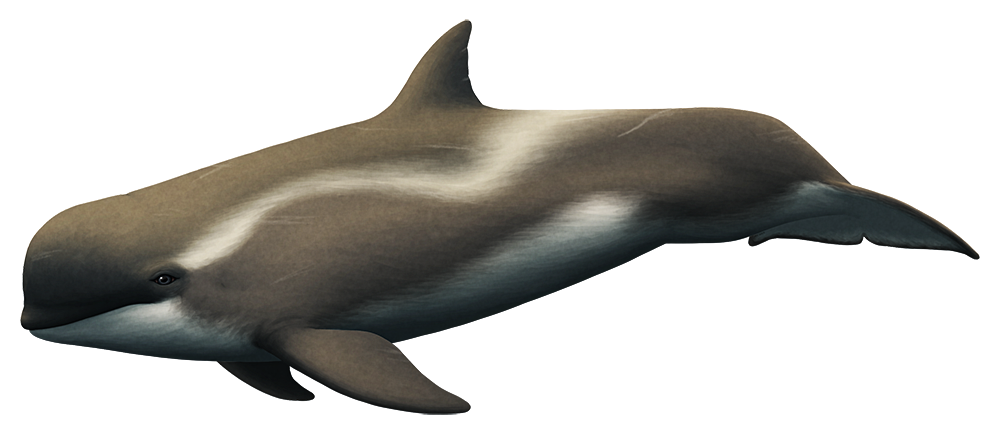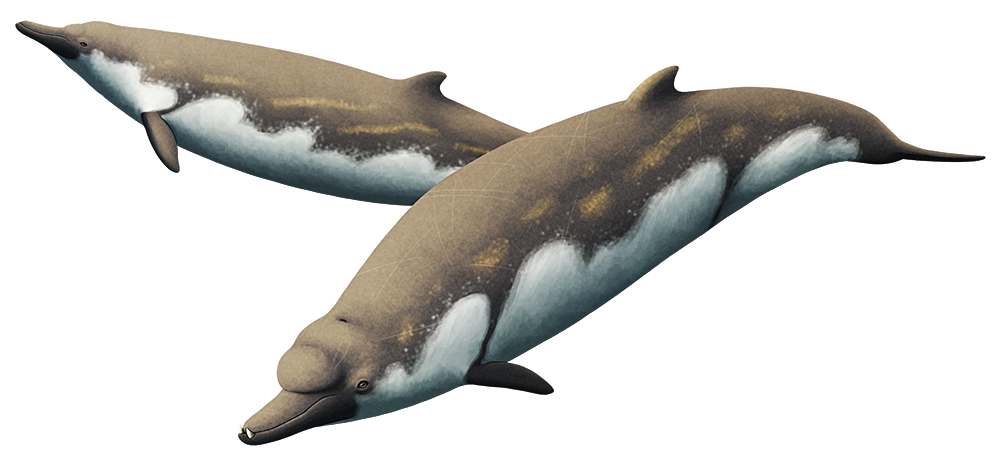Despite commonly being called “killer whales” modern orcas are actually the largest living members of the oceanic dolphin family. Their ancestors are thought to have diverged from other dolphins between 10 and 5 million years ago – and surprisingly their closest relatives are the much smaller snubfin dolphins found in Australasia.
Living during the Pliocene (5-2 mya) in the Mediterranean, Orcinus citoniensis was an early member of the orca lineage, and was probably a transitional form between their early dolphin ancestors and the modern Orcinus orca.
It was half the size of modern orcas, at about 4m long (~13′). While it had a higher tooth count than its living relatives its teeth were also proportionally smaller, suggesting it wasn’t specialized for tackling large prey and probably fed mainly on fish and squid.



